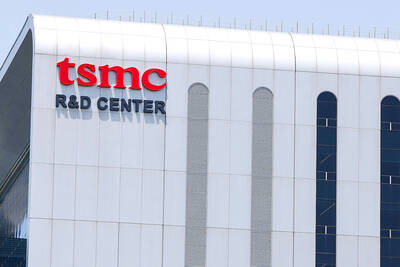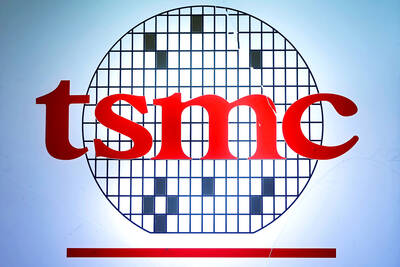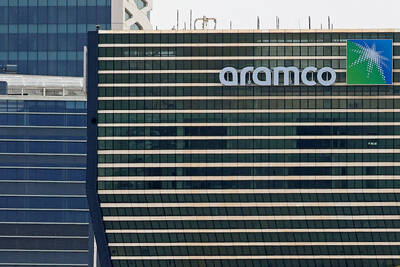Japan’s current account surplus in April fell by more than half from a year earlier as the global economic downturn continued to batter exports, official data showed yesterday.
The finance ministry said the April surplus dropped by 54.5 percent to ¥630.5 billion (US$6.39 billion) against a surplus of ¥1,385.9 billion a year earlier, marking the 14th consecutive monthly fall.
However, hopes for recovery remained intact, with other recent data indicating a gradual increase in production as stimulus programs by various governments kick in to ease the global economic pain, analysts said.
A country’s current account reflects the net flow of transactions, mainly its balance of trade, with other countries, but also money flows such as interest payments and returns on foreign investments.
Japan’s current account surplus was trimmed in April as exports fell 40.6 percent year-on-year to ¥3,915.1 billion, outpacing a 37.8 percent drop in imports, which came to ¥3,730.8 billion, the data showed.
The good news for the world’s second-largest economy was that exports fell at a slower pace than in the previous months. In March, exports dropped 46.5 percent, and in February the fall was 50.4 percent.
Japan’s trade performance “will likely continue to track this slight improvement in exports for the time being,” said Norio Miyagawa, an economist at Shinko Research Institute.
Expectations of an upswing in Japan have risen in recent weeks, with output in some sectors starting to pick up following months of painful production cuts and inventory adjustments.
Japan’s industrial production for April jumped 5.2 percent, the fastest monthly increase in more than five decades, boosting hopes of a recovery amid a strong rebound in local stocks.
The current account should stay in surplus in the coming months, with exports expected to pick up, while imports are likely to remain sluggish, Mizuho Research Institute analyst Atsushi Matsumoto said.
“While exports are likely to get some support from the global recovery, cheap prices of crude oil — which makes up a big part of [Japan’s] imports — could cause imports to slightly decline,” he said.
“That means Japan’s current account will likely keep posting surpluses,” he said.
Analysts are hopeful that Japan’s economy could start to grow again in the year’s second quarter after shrinking 4.0 percent quarter-on-quarter in the three months to end-March.
The Japanese economy should also benefit from a series of massive stimulus measures to counter the global crisis, including a US$147 billion supplementary budget for the current fiscal year, analysts said.

BIG BUCKS: Chairman Wei is expected to receive NT$34.12 million on a proposed NT$5 cash dividend plan, while the National Development Fund would get NT$8.27 billion Taiwan Semiconductor Manufacturing Co (TSMC, 台積電), the world’s largest contract chipmaker, yesterday announced that its board of directors approved US$15.25 billion in capital appropriations for long-term expansion to meet growing demand. The funds are to be used for installing advanced technology and packaging capacity, expanding mature and specialty technology, and constructing fabs with facility systems, TSMC said in a statement. The board also approved a proposal to distribute a NT$5 cash dividend per share, based on first-quarter earnings per share of NT$13.94, it said. That surpasses the NT$4.50 dividend for the fourth quarter of last year. TSMC has said that while it is eager

‘IMMENSE SWAY’: The top 50 companies, based on market cap, shape everything from technology to consumer trends, advisory firm Visual Capitalist said Taiwan Semiconductor Manufacturing Co (TSMC, 台積電) was ranked the 10th-most valuable company globally this year, market information advisory firm Visual Capitalist said. TSMC sat on a market cap of about US$915 billion as of Monday last week, making it the 10th-most valuable company in the world and No. 1 in Asia, the publisher said in its “50 Most Valuable Companies in the World” list. Visual Capitalist described TSMC as the world’s largest dedicated semiconductor foundry operator that rolls out chips for major tech names such as US consumer electronics brand Apple Inc, and artificial intelligence (AI) chip designers Nvidia Corp and Advanced

Saudi Arabian Oil Co (Aramco), the Saudi state-owned oil giant, yesterday posted first-quarter profits of US$26 billion, down 4.6 percent from the prior year as falling global oil prices undermine the kingdom’s multitrillion-dollar development plans. Aramco had revenues of US$108.1 billion over the quarter, the company reported in a filing on Riyadh’s Tadawul stock exchange. The company saw US$107.2 billion in revenues and profits of US$27.2 billion for the same period last year. Saudi Arabia has promised to invest US$600 billion in the US over the course of US President Donald Trump’s second term. Trump, who is set to touch

SKEPTICAL: An economist said it is possible US and Chinese officials would walk away from the meeting saying talks were productive, without reducing tariffs at all US President Donald Trump hailed a “total reset” in US-China trade relations, ahead of a second day of talks yesterday between top officials from Washington and Beijing aimed at de-escalating trade tensions sparked by his aggressive tariff rollout. In a Truth Social post early yesterday, Trump praised the “very good” discussions and deemed them “a total reset negotiated in a friendly, but constructive, manner.” The second day of closed-door meetings between US Secretary of the Treasury Scott Bessent, US Trade Representative Jamieson Greer and Chinese Vice Premier He Lifeng (何立峰) were due to restart yesterday morning, said a person familiar